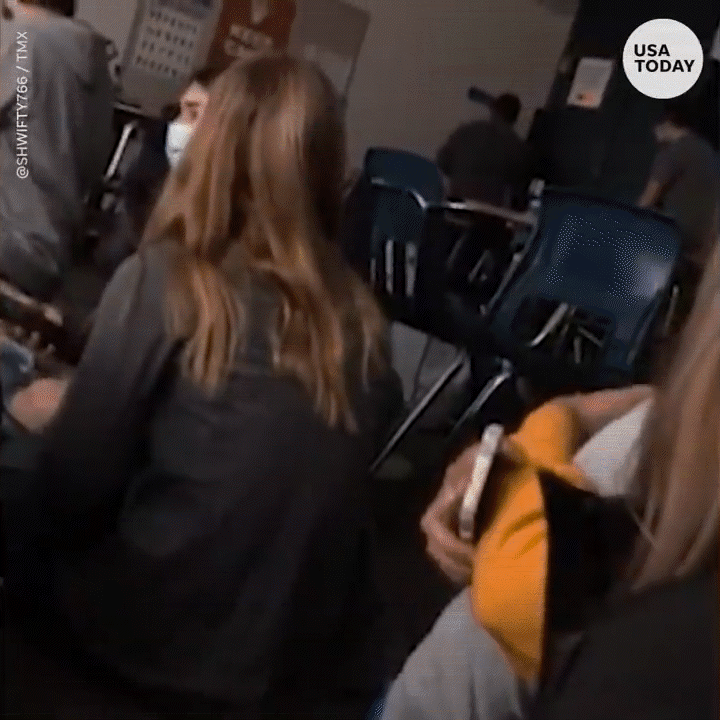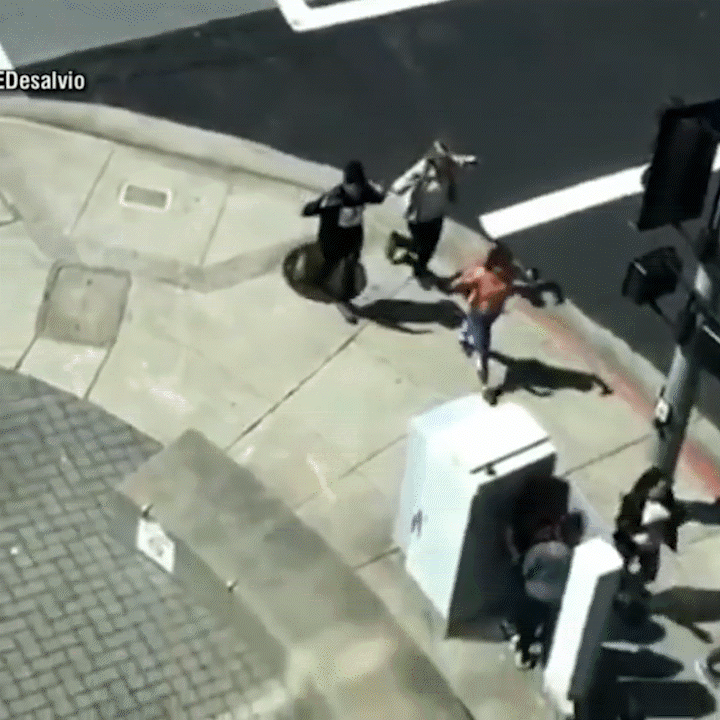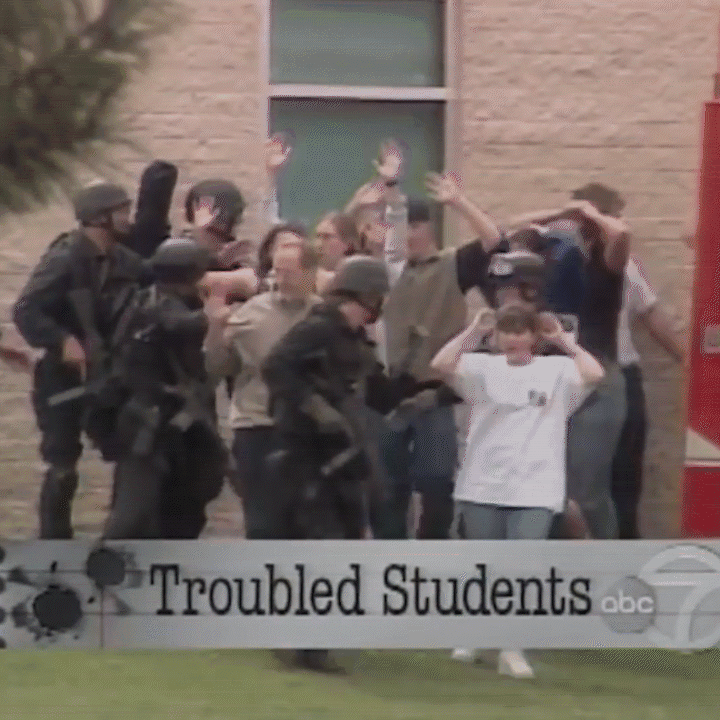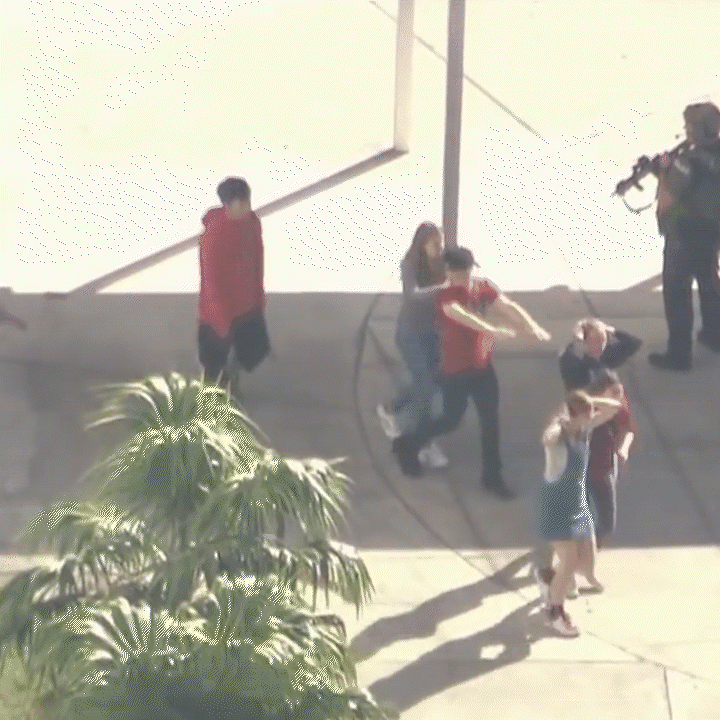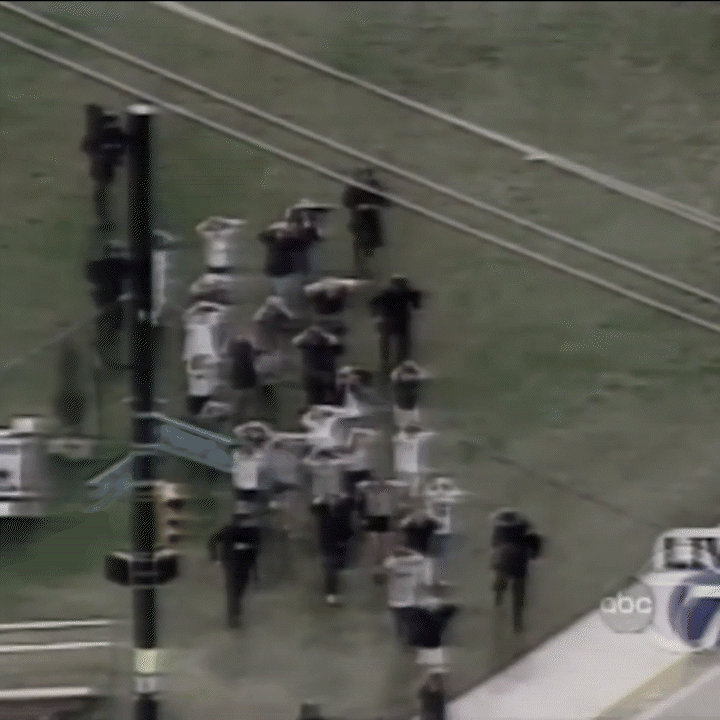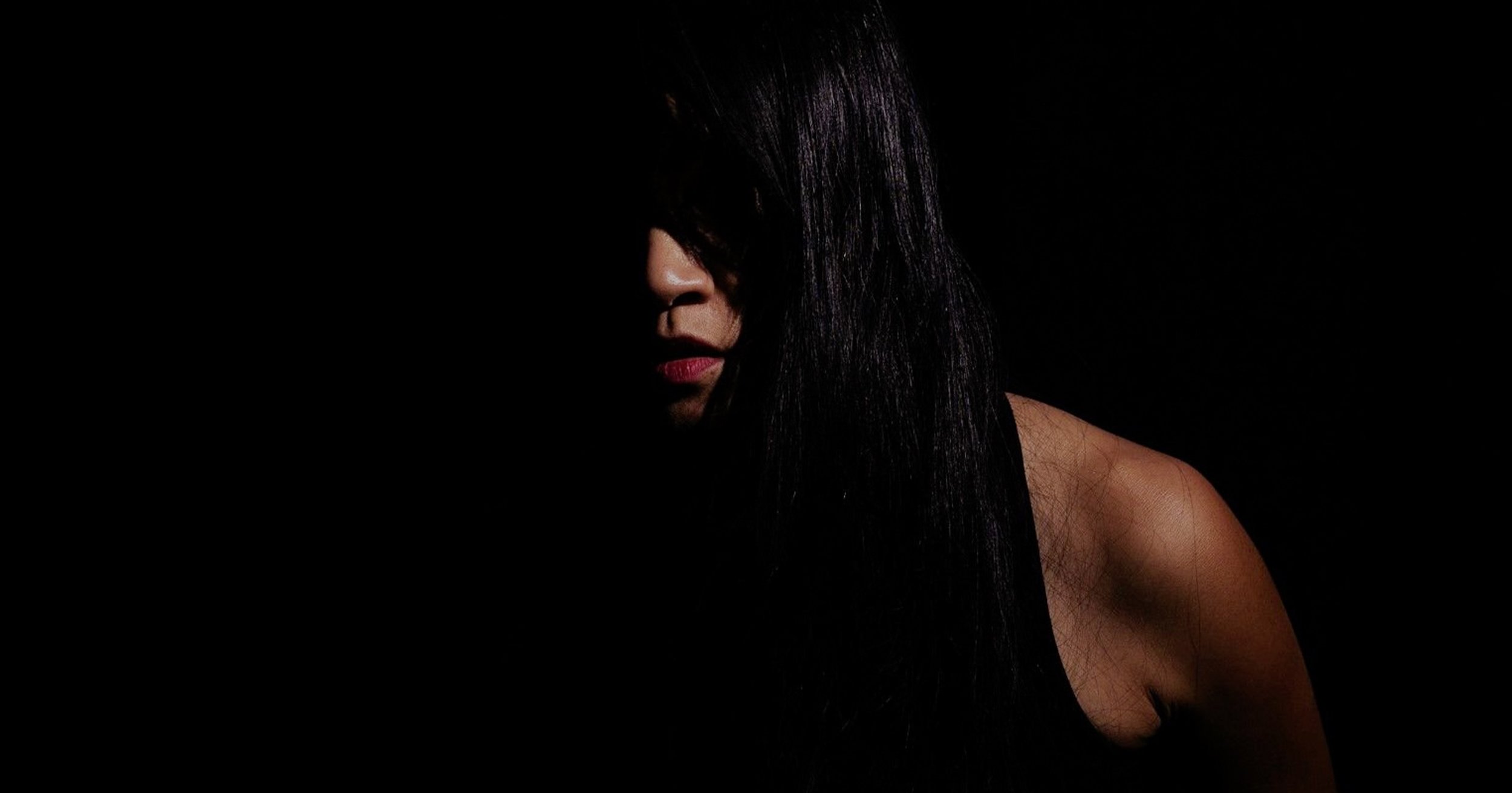
Workers
Fleeing
The Factory
Ryat Yezbick
When the archive…seems easily to give access to what one expects of it, the work is all the more demanding. One has to patiently give up one’s natural “sympathy” for it and consider it an adversary to fight, a piece of knowledge that isn’t to annex but disrupt. It is not simply a matter of undoing something whose meaning is too easy to find; to be able to know it, you have to unlearn and not think you know it from a first reading.
—Arlette Farge, La Gout d l’Archive as quoted in Along the Archival Grain by Ann Laura Stoler 1
In 1966, live footage from the University of Texas tower shooting circulated on major news stations across the country along with eyewitness news segments spanning over an hour. It included images of students fleeing campus while an active shooter—occupying the university’s clock tower—shot unsuspecting campus attendees. Although there were many prior mass shootings reaching back to the 1800s, this was the first mass shooting to be covered by the press on television as a media spectacle.
Images from news media footage aired on Fox 7 news of the University of Texas tower shooting, in Austin, Texas, 1966. Source. Credit: Fox 7 news. Images depict the university tower from where the shooter assailed the public, campus attendees hiding for safety, a policeman, and a policeman addressing a crows.
Coverage suggests camera operators were embroiled in the very middle of the chaos, on the ground, and without a secure and remote location from which to view the entirety of the event. News channels, relying on only a couple of camerapersons using handheld cameras, showed almost all the same footage and held long shots of the tower in anticipation of potential police intervention and “action.” Topical elements that would become part of the canonical language of mass shooter media imagery were captured throughout the day. Media coverage documented students fleeing campus buildings or hiding behind cars; police and vigilantes in slacks, cowboy hats, and suits running towards stakeout positions advancing to apprehend the shooter; bullets flying off of the clocktower; fellow students rescuing the wounded; students taking cover; crowds gathering, ambulances arriving for the wounded; the dead being carried out on stretchers. All of this coverage was filmed by news videographers whose bodies were as much at risk as other campus attendees. This news coverage was an early example in a now lengthy lineage of news media footage documenting mass shootings. This footage itself has become symptomatic of structural oppression, and the way the footage has been collected has thus inadvertently documented the erosion of workers’ rights over time.
Harun Farocki’s 1995 film Workers Leaving the Factory, starts and ends with 50 seconds of the Lumière Brothers’ 1895 film of the same name, depicting factory workers exiting their own family factory. Farocki uses the Lumière Brothers movie as a jumping off point to examine the factory gate as a site of social conflict and control of the blue-collar workers shown exiting various factories in both early twentieth century documentary and fictional films. At the beginning of the film, Farocki states, “...the workers are running as if they have already lost too much time…they are running as if they knew somewhere better to be… as if impelled by an invisible force. No one remains behind.” Farocki’s curiosity regarding where workers were headed after work preoccupied many documentary filmmakers of the 1990s as the factory gate—a symbol of corporate control over workers’ time—historically served as a site of social unrest. Unlike the eighteenth century, in which workers relatively controlled their work schedule, the rise of nineteenth century factory production created a new paradigm in which laborers were disciplined to work at a certain speed, location, and schedule according to the employer’s liking. The factory gate was thus seen as an emblem of control. Examining workers’ lives outside of the factory therefore became a subject of political inquiry for documentary filmmakers, and a means to analyze labor relations with the owning and ruling class.
Images from Harun Farocki’s Workers Leaving the Factory (1995). These depict auto workers leaving the factory at the end of the work day in different locations.
The blue-collar workers in Farocki’s film work at automobile and coal plants and can be seen sprinting out of the factory gate en masse, maneuvering between each other much like cars do today in rush hour traffic. There is an urgency to get away, to leave, to be somewhere else, to be someone else other than the laborer. In many ways, these workers look as if they were fleeing poor working conditions, such as long hours, few and short breaks, bad air quality, inadequate safety equipment, and more—a coincidence that is likely no coincidence at all. If Farocki’s factory workers were fleeing, what characteristics defined their flight? Where were they going to take refuge? Once they were out of range of this camera, what pursuits? While Farocki’s workers’ leisure time may have been carried out in the relative privacy of a pre-surveillance society, today’s workers are simultaneously remade into consumers, as another kind of laborer who creates data to be extracted in their leisure time.
I am following Farocki's inquiry to analyze quite a different kind of visual document, that of mass shootings. In this text, I focus on the production and consumption of news media coverage of mass shootings as symbolic factory gates for lower and middle class workers 2
as it pertains to contemporary forms of labor (remote, in person, online, influencer culture, etc.). Media coverage of mass shootings provides a vantage point from which we can ask: Where are these workers fleeing to? What does their flight say about our current capitalist paradigm and its relationship to the worker? And what kind of laborer is produced from this coverage now that the general public is part of the mass media production pipeline accessible on smartphones? As work becomes increasingly decentralized, so too does the factory gate. By looking at the evolution of eyewitness news coverage of mass shootings, we get a clear glimpse into the current relationship between the ruling and owning class, where the ruling class overlaps with the State, and the rest of us.
Early eyewitness news productions in the 1960s relied on a reporter in the field who would function as an “eyewitness” to the event for the news anchor in the studio and at-home news viewers. News photographers and videographers' documentation coupled with reporting on what was being witnessed were key to the validity of eyewitness accounts, which relied heavily on visual elements and action sequences as key components in verifying what had occurred. Eyewitness news was, and still is to this day, about gathering evidence in order to factually prove what had taken place. It has, ostensibly, always been a project aimed at procuring an objective truth through visual media and has functioned as a precursor to now extensive surveillance cameras and social media footage used as evidence by news media and courts alike to verify what had transpired.
At the core of the project of eyewitness news is the belief that seeing is believing, an idiom that is today tested in the face of generative AI. Prior to the advent of AI, the validity of twentieth century news revolved around this idiom. Nevertheless, theories from writers and critics such as Susan Sontag opposed this line of thought. In her seminal book, Regarding the Pain of Others, Sontag examines how war photography drastically altered society’s relationship to images of human suffering. Photorealistic visual representations of violence, she argued, created an ethical dilemma for the viewer. Confronting an image in which no universal response to suffering was presented and no singular sense of validity produced in the onlooker was the basis of this dilemma. Photography, she writes, is an “objective record and personal testimony, both a faithful copy or transcription of an actual moment of reality and an interpretation of that reality.”3
Controlling the validity of the image by staking an objective, singular claim to truth is central to the project of eyewitness news.
Today, news agencies’ attempts to control the narrative through a kind of reporting that stakes a claim to objectivity becomes a site of social unrest itself, a trajectory we can trace through the evolution of eyewitness news. The claim to truth, in the case of mass shootings, is an attempt to control how we read the signifiers at play—the people (shooters, victims, heroes, families) and places (public, leisure, work, church)—of a given event. This assertion is imperative in order to control the narrative and, in turn, control society. If we trouble this pronunciation, the footage itself starts to tell a different story about what is transpiring. If we examine news images of people exiting buildings during mass shootings, we come to realize we are witnessing symbolic representations of social unrest at the factory gate.
In the University of Texas tower shooting footage, the people pictured are predominantly white-collar workers fleeing a different kind of factory, the university, an institution which at the time held the promise of upward mobility and the possibility of escape from the more grueling physical labor Farocki’s workers were subject to performing. The visual differences between blue-collar workers leaving factories and white-collar workers in training leaving universities are stark. While Farocki’s factory workers are seen in dark colored workwear likely made of sturdy material, the students fleeing the University of Texas campus are dressed instead in what looks like button-down, white collared shirts. The presumed button-down shirt suggests these students are training for work in an office or in a relatively pristine environment in which their clothes will not be soiled by the process and activity of industrial production. The upward mobility promised in the students’ attire suggests they may escape the physically challenging work of the laboring class.
Left image from Harun Farocki’s Workers Leaving the Factory depicting auto workers leaving the factory at the end of the work day. Right image from the University of Texas tower shooting news coverage in Austin, Texas.
News narratives of the 1966 University of Texas tower shooting focused heavily on sensationalizing the emotional drama of the shooting coupled with psychologizing the shooter and unpacking his mental state—why did he do it and what caused him to lose his mind? While the media did discuss that the shooter was a Vietnam veteran, they did not discuss the lack of adequate social services for veterans nor the lingering horrors of the war for those returning to isolating urban and suburban neighborhoods that bred social discontent. This limited framing avoided the necessary political discussions around the catastrophic war in Vietnam, how it affected this returning veteran-turned-shooter, and how the war was impacting communities at home across the U.S. The news instead melodramatized the murders through long drawn-out segments spanning upwards of an hour, replaying key handheld eyewitness footage embroiled in the “action.” Eyewitness news showed survivors crying, along with interviews variously with students who saved the wounded, police chiefs, the father of the shooter, and the school president.
When we frame these images within the context of a failed war abroad, multiple instances of social unrest appear as we shift focus from narratives of a mentally deranged man towards the U.S. imperial state. The footage captured that day reverberates with the echoes of empire documenting the stark reality of the recently returned Vietnam veteran who, without adequate care and social services, decided to attack his peers with easily procured firearms. The handheld video footage taken by photojournalists inadvertently marked the failures of what was occurring abroad.
If we examine the roles of those who were present that day along the lines of labor relations, we will notice varying labor roles that span class markers: a mentally unwell ex-soldier (the shooter) firing at white-collar workers in training (the victims) with news videographers (the invisible eye) attempting to document the carnage while police (the champion) apprehend the shooter. This configuration has become so commonplace that these roles are perpetuated to this day when telling the story of mass shootings in mainstream media. If we frame sites of mass shootings as symbolic factory gates, however, we can productively compare the scene at the tower with that at the factory gate underlining how both are part of and products of a global conflict between the owning class and everyone else. In this staging, the soldier (the shooter) also becomes a laborer, the students unwitting soldiers for U.S. imperialism, the police workers for the established order, and the news videographers those guarding epistemic authority. The students, in this reading, become key participants in the continued advancement of U.S. production, namely the global exportation of U.S. ideas, culture, and innovation. When we interpret the roles designated in mass shootings along the lines of maintaining national and global social order, we can start to examine how U.S. imperialism manages and controls the means of production both at home and abroad. As the U.S. empire crumbles, how will the narratives around mass shootings in the U.S.—and those caught in the crosshairs of the shootings—change? And, what will those narrative changes say about new global configurations of power? A historical review of news media coverage of mass shootings provides thorough analysis of how news media has, over time, safeguarding existing labor structures in U.S. society while also documenting the ruling classes' increased authoritarianism and imperialism abroad.
If we look at images of people fleeing buildings during mass shootings as a symbolic factory gate and therefore as a site of social unrest—a site that has historically been linked to the suppression of worker movements by companies and the police—we realize we are witnessing the birth of a new form of social control. This form of social control is highly orchestrated and choreographed, well-equipped with military might, and technologically savvy. Today, the capitalist conditions of the contemporary laborer are exceptionally marked by the reality that there is no elsewhere to escape to; presently no space exists outside of our current economic paradigm rooted in and enabled by surveillance technologies. Data collection servers and apps register the movement of workers to track their whereabouts, activities, and interests while sharing their data with corporations, police forces, and institutions. This occurs often without the knowledge or consent of the laborer, in order to generate revenue for corporations from predictive consumer behavioral analysis. In this paradigm, if the consumer is too poor to consume, they are reintegrated into the economic system through criminalization where their labor can be extracted for free. As Shoshana Zuboff describes, if Karl Marx imagined “capitalism as a vampire that feeds on labor…surveillance capitalism feeds on every aspect of every humans’ experience.” 4
The evolution of eyewitness news from on-the-ground footage to aerial imagery reflects the United States’ military developments at the time as helicopters, initially deployed for war in Vietnam for aerial firepower, became more commonplace in the U.S. public sphere. Even though modern helicopters were invented in the 1950s, they didn’t become readily available for domestic use in journalism until the mid to late 1980s. Valued for their ability to hover, helicopter video footage eventually became widespread in eyewitness news coverage. One early prominent case in which helicopter footage was notably featured was during the 1984 mass shooting at a McDonalds in San Ysidro, California. Aerial close-up and wide shots can be seen throughout the news coverage.
Footage aired on Channel 8 News Throwback of the McDonald’s mass shooting in San Ysidro, California, 1984. Source. Credit: CBS 8 San Diego. Imagery from helicopter footage of first responders on site at the fast-food restaurant.
Helicopter footage became a precursor to today’s use of drone footage in live news coverage, which is often interspersed with police body cam video footage and social media videos of those caught in the crosshairs of violence. The increased use of aerial footage in news coverage since the 1980s has shifted the perspective in which the general public is witnessing these events, placing viewers at a safe aerial distance from the violence. This is an entirely new vantage point unfolding on viewers’ screens, one in which their bodies and the bodies of reporters are safe while their neighbors or loved ones appear as ants below fleeing from carnage.
This vantage point harkens to what Donna Haraway calls “the god trick” in which drone footage and multi-perspective reporting produce a disembodied viewer who is able to observe “everything from nowhere.”5 Haraway likens this trick to early scientific colonial endeavors in which the scientist’s or observers’ point of view was treated as a neutral, a priori universal position. Aerial footage in journalism is used for this effect as it allows the viewers to see everything unfolding on the ground in real time, following those fleeing, cop movement, chases, and more from the safety of their couch courtesy of the camera’s eye in the skies. If the viewer is also a potential worker, it suggests a worker who is removed from the carnage by the safety of the viewing medium.
Images from footage by WSPA, Townville Elementary school shooting in Anderson, Colorado, 2016. Source. Credit: WSPA 7 NEws. Image by GMA, Central and Performing Arts High School in St. Louis, MO, 2022. Source. Credit: Fox 2 St. Louis; Image by NBC News, Mall Shooting in Allen, Texas, 2023. Source. Credit: NBC News
In reality, most people watching this coverage are not in the skies with the camera but on the ground with a screen. Of course this viewer is safe, but potentially the viewer is in a public place where a mass shooting could theoretically occur at any moment. In addition, the news videographer has been removed from the scene, their body at a remote location as they record the carnage occurring at a distance from the vantage point of a drone at altitude. Aerial footage suggests there are stakeout positions—predominantly inside the home—where people can remain safe, where they too can tap into surveillance technology to move through public spaces more carefully by avoiding certain areas. This paradigm suggests that increased surveillance technology will keep us safe by removing us further from the violence, a promise that is in reality reserved for the privileged few.
However, today’s rampant use of victim cellphone and social media footage as firsthand eyewitness account has again altered this paradigm. Workers at their places of employment, whether on their computer or phone, are using technology to mediate their relationship to their work and their world at large. The technology creates a buffer between the worker and a potentially toilsome or demanding workplace by allowing them to become the removed observer of another reality on the screen. This mediated relationship to presence takes on new meaning in the context of mass shootings as people film themselves and others fleeing on their cellphones, using the phone as a buffer between the ensuing violence around them and their vulnerable embodied reality. Here the cellphone actively refashions the worker as surveillant, a new type of media producer, by turning the cellphone user into a witness while creating the illusion that they are out of harm's way. The output produced as a result of this new work includes numerous social media videos documenting survivors' escapes from harrowing violent encounters. This perspectival shift tells a different story of mass shootings and the worker’s plight, one in which a new kind of worker is being fashioned in the moment of violence turned spectacle. Here, the factory gate could both be seen as the buildings from which people are fleeing, but also the computers and cellphones people use to consume and produce news media content. The screen becomes the factory gate, a distributed site governed by the algorithms of digital engagement and surveillance technologies vis-á-vis mobile apps and social media platforms.
Images from TikTok posts made by a student of the Oxford High School Shooting in Oxford, Michigan, 2021. Source. Credit: USA Today. The video was picked up by news outlets such as USA Today to report on the coverage.
In November 2021, a TikTok video of teenage high schoolers in Oxford, Michigan jumping out of their classroom window to run towards safety went viral. The high schoolers were hunkered down in their classroom hiding underneath desks from an active shooter on campus. In the video, a police officer yells from the other side of the classroom door for the students to come out, saying that it is safe. The students, distrustful of the voice on the other side of the door—believing it to be the shooter playing a trick—confer amongst themselves and decide it’s better to escape out the window. Urgently they rush to the window, jump outside into the snow, and run to another school entrance held open by a police officer. One of the students videography of the entire encounter on their cellphone was uploaded to TikTok hours later, which news outlets later featured in their stories, such as NBC’s titled “Michigan school shooting video shows students’ dramatic escape.”6 If schools function as a site of disciplinary technology, as argued by Michel Foucault, and are a pipeline to work life, then schools may also be seen as a site of social unrest much like the factory gate. In this instance, we are witnessing a new paradigm of worker struggle in which the worker too can document what is occurring, depicting another perspective on the event that may counter mainstream news.
This scenario suggests a new kind of mode of video production embodied in a high school student filming themselves and their peers fleeing for their lives in which the student is both the subject, documentarian, news camera person, character, and viewer all at once, a new model of eyewitness news that is grounded in subjective and individual experience. This paradigm suggests, also, a new kind of worker in training as part of a production model in which the worker can, in theory, sell their video to news media outlets as a kind of “citizen journalist” for a nominal fee or post it to their social media for comments, framing the event within their own understanding and context of the situation. Social media videos of mass shootings potentially challenge mainstream media’s claims to objectivity by presenting a subjective position. Yet, more frequently than not, these videos are used as firsthand eyewitness accounts by the media to tell the same mass shooting story since the 1960s. Few survivors of mass shootings go on to more carefully craft their social media videos as political responses to the issue at large. 7
With the factory already on hand in the form of their phones and the ability to press record potentially providing hundreds of thousands with visual access to a first hand encounter, these (new media) laborers turn even the most harrowing of events into a commodity in which the subtext of “being there,” no matter the cost, pervades as an underlying message in an “influencer economy”: spectacular content, regardless of the topic, garners views. In a neoliberal privatized world fueled by the attention economy in which our very beings and bios are part of our sales pitch, visibility politics are still at play. This market economy recodes the victim into a new media worker category in which this victim becomes part of the active production of the spectacle around the event, as a worker that can be identified, even if only by their username, on national television. This new worker category in turn produces a new kind of viewer, one that is readily able to respond to media—and the originating content creator—through their own video, image, and text on their social media handles. Whereas in 1966, viewers were witnessing the events unfold together while watching TV, today’s consumers can view such events on their phones and post an individualized response immediately. Personalized connected devices make for active engagement with media coverage to the point where news consumers can Tweet, Vlog, TikTok, and livestream their responses to shootings.
This content producing witness plays a key role in the production of surveillance capitalism. Mass shootings are, as two anonymous teenage high school shooting survivors relayed to me at South by Southwest festival (SXSW) in Austin, Texas in 2024, a “once in a lifetime” event, a spectacle to be witnessed. These youths recorded the shooting on their cellphones as it unfolded. Their documentation of this horrific event, when uploaded to the cloud along with other app user data, is integral to a new means of production that trades in consumer behavior predictions to generate surveillance revenue used to more thoroughly categorize consumers in relation to State interests. Posting or streaming mass shootings on social media feeds this information back into the apparatus of surveillance capitalism, in which algorithms—depending on our political stance—may censor the content if too politically framed, while also generating a consumer profile on the content creator with this subject in mind. When circulated without deliberate framing, the content runs the risk of becoming awash in “subscribe,” “like,” and “dislike” culture, thus normalizing the violence. By recording the event, these students folded themselves into a new worker paradigm, fleeing from one site of production while slipping another in their pocket to be used elsewhere later. These students are workers in training. They are workers fleeing a factory.
Images from ABC Nightline News with footage by individual social media users @EDelsavio and Steve Dempsey, YouTube mass shooting in San Jose, California, 2018. Source. Credit: ABC Nightline News; Images from footage by student on TikTok, TikTok/praise8x, Oxford High School mass shooting in Oxford, Michigan, 2021. Source: TikTok (URL now taken down). 04/18/2024. Credit: praise8x.
In the context of mass shootings, workers' relationship to news as a documentary subject is that of the innocent victim (dead or alive) or bystander, a paragon of the spectacle of innocence. Mass shooting news footage shows the degree to which police protocols have choreographed victims’ retreats, frequently followed by interviews of survivors or bystanders at the site of violence by news media. These interviews ironically reinforce the disbelief that such a horrific event occurred. “I can’t believe this happened here…to us…” is a repeated phrase by those in the direct aftermath of a mass shooting, as if the occurrence is out of the ordinary. Shock and expressing disbelief are common responses to extreme violence. They result from the myth that the United States was otherwise a safe place free of violence, or rather, that safety was an assurance promised by the State. At the same time, they also reinforce the myth that violence is extraordinary in the United States. In the case of U.S. mass shootings, the phrase becomes an echo chamber of its own on nightly news reverberating against the promise of safety as traumatized victims recount their experiences in the very public places provided for consumer leisure. The disbelief voiced in these moments both bolsters the demonstration and spectacle of innocence at play—i.e. how could such a horrible thing happen to law-abiding residents—while also, ironically, recognizing the failure of the State to protect its residents. For the State (police) to be seen as liberators, the status of the innocent “victim” must remain intact.
Those exiting buildings during a mass shooting are instructed to raise their arms or place their hands on the shoulders of the person in front of them to relay compliance with authorities. Such choreographed depictions of victims fleeing sites of mass shootings with their arms raised has become increasingly common. Just as in protest or war, arms raised overhead signals that the individual is unarmed and has non-aggressive intentions toward their opposition. In the 1966 University of Texas tower shooting, students are seen running for their lives in all directions; the retreat out of harm's way is quick and unchoreographed, their arms swinging by their sides as they flee. Today, while images of people running for their lives persist, these images are coupled with structured forms of police assisted retreat in which victims run, arms overhead, while the police flank them on all sides.
Witnessing victims being led out of buildings by police throws the status of the victim into question. Looking at the moving images as still shots produces new questions about what is occurring in the frame as directional movement ceases. The police, otherwise framed as liberators, are seen as the only armed presence and appear to be surveilling and corralling civilians toward an unknown location that is out of view. Like prisoners, they are led elsewhere and are kept from fleeing. These choreographies of retreat beg the question retreating from whom and to where. The longer we linger on these images, these questions become more difficult to answer, and the more it appears these workers are caught between escape and the threat of being pushed back inside. When simply playing the footage in reverse, the victims appear as if they are being shoved back inside by the police, visually challenging the status of their victimhood. Are they hostages, perpetrators, victims, rebels, revolutionaries, alibis? If their political status is questionable, what thoughts and feelings are those watching these events on their screens intended to have about their fellow civilians?
Reversing the footage, albeit an uncomplicated video trick, reveals new truths about power relations between the police and mass shooting victims in these instances, making new coded relationships between the State and its residents possible. The new relationship this video trick proposes between workers, the State, and the owning and ruling class is that between hostages and an occupying force. To raise one’s arms to prove blamelessness suggests that all are assumed guilty until proven innocent. This picture reflects an equally true reality of the worker in the United States in instances of mass shootings. These are pictures of workers fleeing the factory. These are images of social unrest and class struggle within the confines of surveillance capitalism.
As the U.S. rushes headfirst into more extreme fascism spearheaded by the world’s tech oligarchy as the architects of surveillance infrastructures, the factory gate as a paradigmatic site of social unrest—both digital and physical—will continue to shift even as workers are interpellated into new roles within this paradigm. Until we create a more equitable world order, the factory gate will continue to persist. What new symbols of ruling class control and worker resistance will appear as the U.S.’s social order changes? In the U.S., people are increasingly waking up to the frightening political reality unfolding around us. People are being kidnapped and disappeared in plain sight from the streets by the State without due legal process, merely because they have protested political and economic inequalities. In this new paradigm, there is no building or physical gate at which to protest as public sites encounter new clandestine forms of political control, and similarly digital sites are also being surveilled and sealed. But just as the means for enacting authoritarian rule have expanded, so too have sites of social unrest. We are spilling out onto the streets across the country in the form of conscientious protest to resist the owning classes demands to continue with business as usual, meanwhile we are becoming more clever at protecting the flow of our data. Perhaps in this transitional moment we will cease to be workers fleeing the factory, but instead become conscionable objectors ready to challenge State agencies’ claims to legitimacy.
Bibliography
About the author
Ryat Yezbick is a visual artist who explores the body, memory, and the politics of witnessing in the era of digital surveillance and decentralized global conflict. Figuring their lived experience centrally in their work, Yezbick addresses a complex set of questions around security, gender, home, family, love, violence, power, and responsibility within the context of the crumbling U.S. empire. They work in a variety of mediums – notably live performance, experimental documentary, installation, new media, and drawing – that have garnered support from audiences and curators internationally. They are a published author, multi-time grant recipient, and faculty member in the Narrative and Emerging Media Program at Arizona State University. They are currently a MIT Open Documentary Lab Fellow and ONX Studio Fellow. Their work has been exhibited in solo exhibitions in Los Angeles, Melbourne, Glasgow, and Athens, and in notable group exhibitions and performances at the Los Angeles Philharmonic (Los Angeles), REDCAT (LA), Materials & Applications (LA), Human Resources (LA), The Akademie Schloss Solitude (Stuttgart), Tribeca Immersive (NY), Glasgow International 2018 (Glasgow), The Banff Center for the Arts and Creativity (Banff), Gertrude Contemporary (Melbourne), Space One (Seoul), the Bangkok Biennial MAHA Pavilion (Bangkok), LAXART (LA), Craft Contemporary (LA), and the Queer Biennial (LA).
Editors: Elbe Trakal, Lior Shamriz. Copy Editor: Claire Baker



















